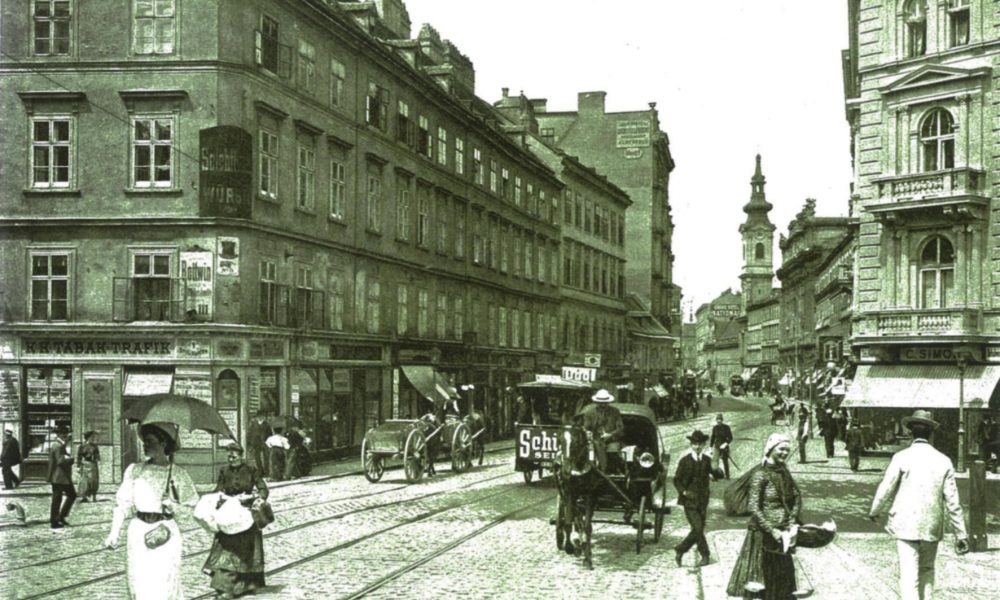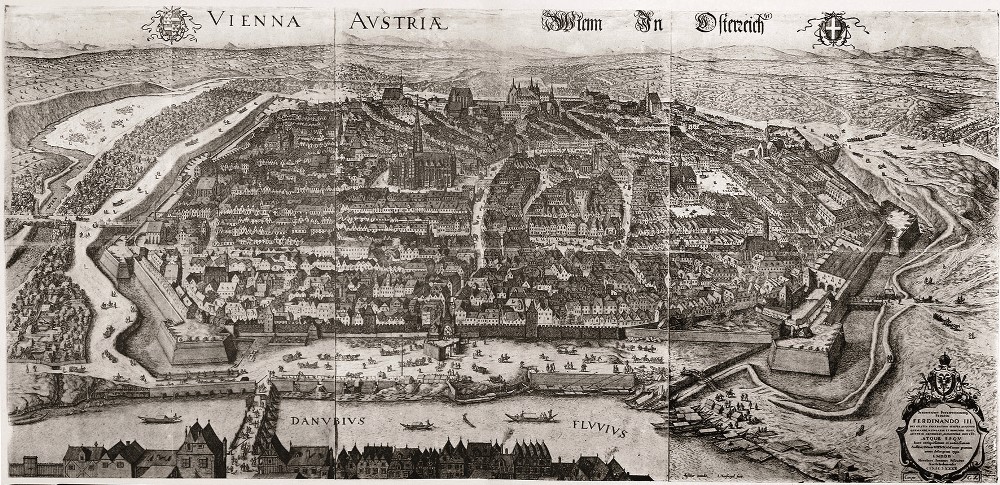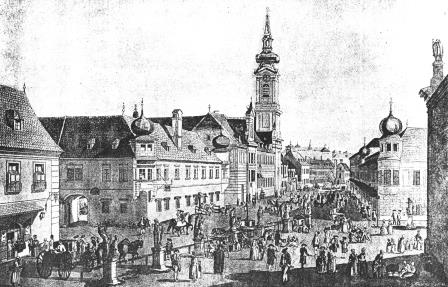The History of Hotel Stefanie – Part 1

Taborstrasse as a hub
The book about the history of our Hotel Stefanie was published last autumn. I can’t repeat it too often: the oldest hotel in Vienna. For nearly two years, historian Marion Luger scrupulously researched and summarized the hotel’s 400-year history. As promised, I wish to give you some insight into the book and I’ll start with Chapter 1:
Taborstrasse as a hub, the Hotel Stefanie at its port

View of Vienna from the north, 1609 (WStLA)
The 2nd District, nowadays called Leopoldstadt, used to be called “Unterer Werd” ( = island). It is a floodplains area that was used as hunting grounds and meadowland and supplied construction timber and firewood for the city. Today’s Taborstrasse ran through this floodplains area to the northern part of the Austro-Hungarian monarchy on one side. On the other side, the street led over a bridge to the center of Vienna. This bridge – today’s Schwedenbrücke – was for centuries (1368–1782) the only connection between Unterer Werd and the city.
Tourism in the Middle Ages
In 1433, Duke Albrecht V of Austria decreed that travelers were required to stay in inns. This decree resulted in many new inns being set up primarily on Taborstrasse. The building located at Taborstrasse 12 was already in existence but is documented as having been operated continuously as an inn since July 8, 1600. Previously called the “Weisse Rose” (White Rose) – today it is the Hotel Stefanie.

Taborstraße 1725
At the time, today’s Donaukanal (Danube channel) was an unregulated main arm of the Danube that was used intensively for ship travel. The bank of the Danube offered numerous wharfs directly in front of the city gates, a significant advantage for long-distance trade.
In 1812, Alois Groppenberger von Bergenstamm reported in the Geschichte des unteren Werds (History of the Unterer Werd): “Goods are continuously unpacked and loaded, and on the river back and forth to Hungary through to Zemun they are reloaded in the same way. The wide streets for the freight cars are always too narrow, the unloading spaces too small for goods, and there are too few stops for foreigners from all nations.”
Travelers liked to lodge at the inns outside of the city walls, as they were often less expensive. Moreover, there was sufficient room to park horse-drawn carriages and wares.
Progress on rails
In 1838, not far from the Hotel Stefanie, the two most important railroad stations of the Habsburg empire were opened. The first steam train of the Austro-Hungarian monarchy traveled from Nordbahnhof – along Kaiser-Ferdinands-Nordbahn. At the same time, it was the dawn of the tramway age – lovingly nicknamed “Bim” by the Viennese. Ever since 1882, a tram line has traveled over Schwedenbrücke (then called Ferdinandsbrücke) to Taborstrasse and on to Nordwestbahnhof.
Good transport connections were thus always a given – an advantage that our guests continue to appreciate today. You can reach the airport in 30 minutes and Hauptbahnhof (the main train station) in 15 minutes. Getting to the underground/subway is 5-minute walk, and the tram stop is pretty much right in front of the entrance. To reach the most important landmarks downtown, walking is still your best bet – you can reach St. Stephan’s Cathedral in just 10 minutes.
If you’d like to learn more about Hotel Stefanie’s history, the book, with many illustrations, is available for purchase at the reception of the Hotel Stefanie. You can read more here in the blog soon.










